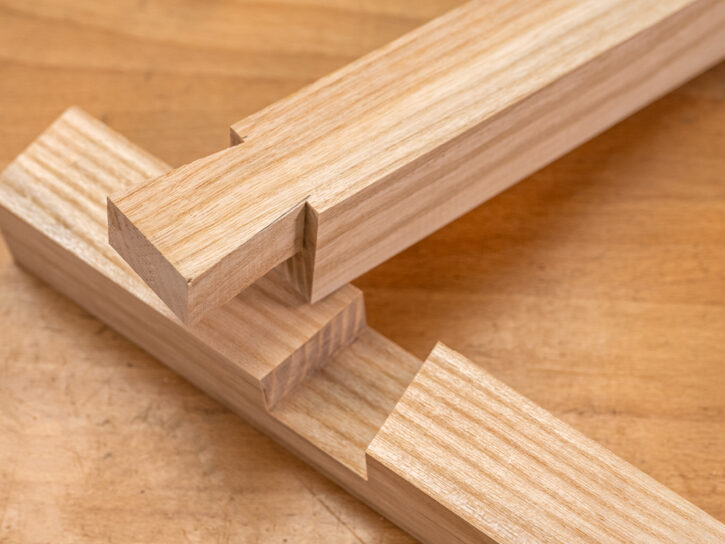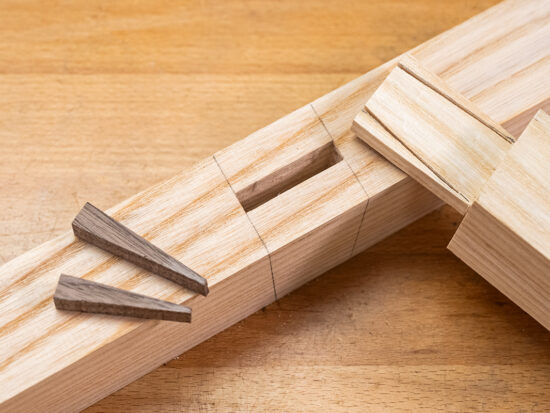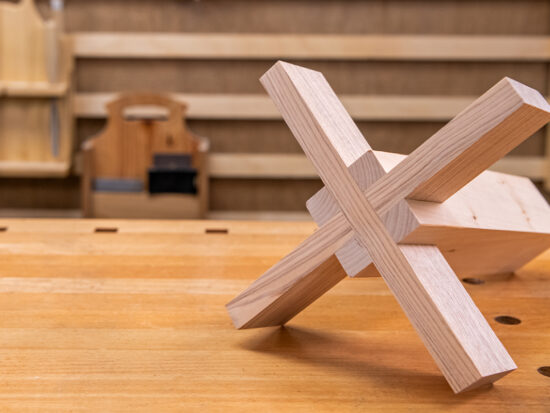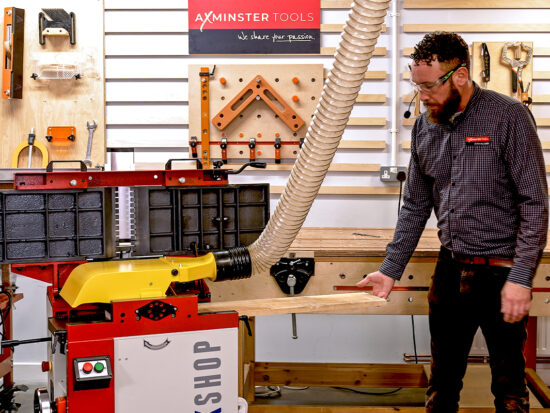Choosing Timber for Your Projects | Woodworking Basics

If you are taking your first steps into woodworking, then choosing timbers for your project can be overwhelming.
Whether you are crafting a simple shelf, or embarking on a more intricate project, selecting the right timber is crucial for the success and longevity of your creation. In this guide, we delve into everything you need to know about choosing timber that's optimal for your woodworking.
Understanding the basics: hardwoods vs softwoods
One of the first decisions you'll encounter is whether to use a hardwood or a softwood for your project. Contrary to what the names suggest, the classification is not based on the density or hardness of the wood. Instead, it refers to the type of tree the timber comes from.
Hardwoods come from deciduous or broadleaved trees such as oak, maple, walnut, and cherry. Hardwoods are prized for their durability, strength, and aesthetic appeal. They are often used for furniture, flooring, and decorative pieces.
Softwoods are derived from evergreen trees like pine, cedar, and spruce. Softwoods are generally easier to work with due to their lower density and are commonly used for construction, framing, and outdoor projects.
Here is a short video with advice on which timbers to consider when making a project for outdoor use, such as a garden bench.
Manmade alternatives
In addition to natural wood, there are manmade timbers such as plywood, MDF (medium-density fibreboard), and particleboard. These are engineered wood products made by binding wood fibres or particles together with adhesive under heat and pressure.
They offer uniformity, stability, and are often more affordable than solid wood. While they may lack the natural beauty of hardwoods, they are invaluable for certain applications such as cabinetmaking and structural support.
Timber structure: sapwood and heartwood
Within a tree, there are two main regions of wood: sapwood and heartwood.
- Sapwood: This is the outer layer of the tree and is responsible for transporting water and nutrients. It is typically lighter in colour and more susceptible to decay and insect damage.
- Heartwood: As the tree matures, the inner layers of wood become heartwood. It is darker in colour and denser than sapwood, offering greater resistance to decay and insects.
When choosing timber, consider whether you want to showcase the contrast between sapwood and heartwood or if you prefer a more uniform appearance.

Cell structure and strength
The cell structure of timber plays a significant role in determining its strength and suitability for different woodworking projects.
Fibre orientation: Timber consists of elongated cells aligned along the grain direction. The arrangement and orientation of these fibres influence the strength properties of the wood. Longitudinal fibres contribute most to the strength of timber, providing tensile and compressive strength along the length of the board.
Density: The density of timber, determined by the size and arrangement of cells, affects its strength and stiffness. Dense hardwoods generally have smaller, closely packed cells, resulting in greater strength and resistance to bending or compression compared to softwoods with larger, more open cell structures.
Growth rings: The growth rings in timber represent the annual growth of the tree and consist of alternating layers of earlywood (springwood) and latewood (summerwood). The density and arrangement of growth rings can impact the strength and dimensional stability of the wood. Timber with closely spaced growth rings tends to be stronger and more stable than wood with wide, irregular growth rings.

Effects on wood joining: The cell structure of timber influences its ability to bond effectively with adhesives. In general, hardwoods with dense cell structures provide better glue adhesion than softwoods with more open cell structures.
Timber with a dense cell structure and uniform grain orientation provides better holding power for screws compared to wood with irregular grain patterns or large voids between cells. Pre-drilling pilot holes can help prevent splitting and ensure secure fastening, especially in hardwoods with high density and hardness.
The cell structure can also impact the effectiveness of various joinery techniques. Dense hardwoods with consistent grain patterns are well-suited for intricate joinery and can produce strong, durable connections. Softwoods with more irregular grain patterns may require reinforcement or additional support to achieve reliable joints.
Seasoning and shrinkage
Freshly cut timber contains a significant amount of moisture, which can lead to warping, twisting, and splitting as it dries. To mitigate these issues, timber is seasoned or dried to reduce its moisture content. This can be done naturally over time or through kiln-drying for faster results.
Properly seasoned timber is more stable and less prone to movement, making it ideal for woodworking projects.
Purchasing timber
When purchasing timber, inspect it for any defects such as knots, splits, or warping. While small knots can add character to your project, large knots can weaken the wood and cause problems during machining. Also pay attention to the grain pattern and direction, as this can affect the wood's strength and appearance.
For buying timber, you have several options of how the timber is cut. The two primary sawing methods are plain sawing (also known as flat sawing) and quarter sawing.

In plain sawed timber, the log is cut into planks by slicing it parallel to the growth rings. This results in boards with a varied grain pattern that follows the natural contours of the tree. It is versatile and suitable for various woodworking projects, including furniture making, cabinetry, flooring, and construction.
Quarter sawn timber involves dividing the log into quarters before sawing perpendicular to the growth rings. Quarter sawed timber is valued for its stability, uniformity, and distinctive grain pattern and is the preferred choice for premium woodworking projects, including high-end furniture, cabinetry, flooring and musical instruments where superior quality and aesthetics are paramount.
Choosing timber: things to consider
As we've learnt, choosing timber for your project is not a simple case of using what "looks nice". Instead it is a far more complex process of selecting the timber that is appropriate for your project.
Choosing the right timber is essential for the success of your woodworking project. You need to consider the purpose of your project, its intended use and its final home. This will help you chose the timber with the right cell structure, density and grain direction, while also considering its overall look and feel. It will also help you decide the joining methods required ensuring your project will be strong, durable and built to last.
More woodworking tips
If you are starting out on your woodworking journey then explore our blog for further woodworking tips and project ideas.









